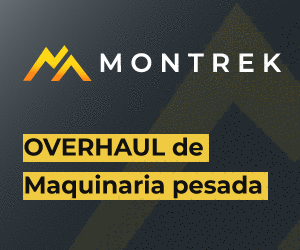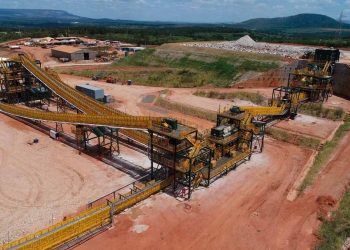Human rights organization Provea and opposition MP Olivia Lozano denounced that at least three people were killed following the incursion of an armed group in a mining town in southern Venezuela.
In a preliminary report of the incident, Provea explained that the evening of November 22, 2019, members of a gang known as “the blind’s union” stormed into the small town of Ikabarú in the Bolívar state and opened fire. Antonio Perera, a sergeant of the Bolivarian National Guard, Edison Ramón Soto, an Indigenous member of the nearby Manakru community, and Jeremy Muñoz
NGO Provea and the Human Rights Commissioner urged authorities to investigate the incident, jail the perpetrators and establish security mechanisms to avoid similar situations from happening again
Ikabarú sits on the Pemón traditional territory and it is a mixed community where some 2,500 Indigenous and non-Indigenous residents live. It is located in the Gran Sabana municipality where placer gold mining has been traditionally carried out by the Pemón First Nation. In recent years, however, Indigenous miners have been displaced by illegal miners running criminal organizations.
“It is important to highlight that the State is tolerating these actions. According to a number of testimonies, a week before this weekend’s incident took place, the community had been alerted that armed groups may be coming into town, something the Bolivarian National Guard knew about and yet they didn’t go and fulfill their duties of surveillance and protection,” Provea’s report reads.
According to the NGO, incidents like the one that happened on Saturday in Ikabarú are common in Venezuela’s mining towns. In those areas, criminal groups
Based on its own research, Provea believes that the approval and expansion of the Orinoco Mining Arc have prompted the creation of parallel structures of population control that function with the support of the Nicolás Maduro government. These structures -the NGO states- have the freedom to employ violence to seize and destroy Indigenous land, force the displacement of entire communities and promote the loss of traditional practices.
The Mining Arc is a 111,843-square-kilometre concession area (12.2% of Venezuela’s landmass) for mining primarily gold but also diamonds, iron, copper, bauxite, coltan, and other minerals. Even though back in 2016 the government said that the idea behind its creation was to better manage resource extraction in the southern Amazonas, Delta Amacuro and Bolívar states, the area is now almost entirely controlled by gangs, who carry out bloody battles to mark off the boundaries of their mining territories.
Officials estimate that gold reserves in the region are about 7,000 tonnes of gold.
Human rights organization Provea and opposition MP Olivia Lozano denounced that at least three people were killed following the incursion of an armed group in a mining town in southern Venezuela.
In a preliminary report of the incident, Provea explained that the evening of November 22, 2019, members of a gang known as “the blind’s union” stormed into the small town of Ikabarú in the Bolívar state and opened fire. Antonio Perera, a sergeant of the Bolivarian National Guard, Edison Ramón Soto, an Indigenous member of the nearby Manakru community, and Jeremy Muñoz
NGO Provea and the Human Rights Commissioner urged authorities to investigate the incident, jail the perpetrators and establish security mechanisms to avoid similar situations from happening again
Ikabarú sits on the Pemón traditional territory and it is a mixed community where some 2,500 Indigenous and non-Indigenous residents live. It is located in the Gran Sabana municipality where placer gold mining has been traditionally carried out by the Pemón First Nation. In recent years, however, Indigenous miners have been displaced by illegal miners running criminal organizations.
“It is important to highlight that the State is tolerating these actions. According to a number of testimonies, a week before this weekend’s incident took place, the community had been alerted that armed groups may be coming into town, something the Bolivarian National Guard knew about and yet they didn’t go and fulfill their duties of surveillance and protection,” Provea’s report reads.
According to the NGO, incidents like the one that happened on Saturday in Ikabarú are common in Venezuela’s mining towns. In those areas, criminal groups
Based on its own research, Provea believes that the approval and expansion of the Orinoco Mining Arc have prompted the creation of parallel structures of population control that function with the support of the Nicolás Maduro government. These structures -the NGO states- have the freedom to employ violence to seize and destroy Indigenous land, force the displacement of entire communities and promote the loss of traditional practices.
The Mining Arc is a 111,843-square-kilometre concession area (12.2% of Venezuela’s landmass) for mining primarily gold but also diamonds, iron, copper, bauxite, coltan, and other minerals. Even though back in 2016 the government said that the idea behind its creation was to better manage resource extraction in the southern Amazonas, Delta Amacuro and Bolívar states, the area is now almost entirely controlled by gangs, who carry out bloody battles to mark off the boundaries of their mining territories.
Officials estimate that gold reserves in the region are about 7,000 tonnes of gold.
Human rights organization Provea and opposition MP Olivia Lozano denounced that at least three people were killed following the incursion of an armed group in a mining town in southern Venezuela.
In a preliminary report of the incident, Provea explained that the evening of November 22, 2019, members of a gang known as “the blind’s union” stormed into the small town of Ikabarú in the Bolívar state and opened fire. Antonio Perera, a sergeant of the Bolivarian National Guard, Edison Ramón Soto, an Indigenous member of the nearby Manakru community, and Jeremy Muñoz
NGO Provea and the Human Rights Commissioner urged authorities to investigate the incident, jail the perpetrators and establish security mechanisms to avoid similar situations from happening again
Ikabarú sits on the Pemón traditional territory and it is a mixed community where some 2,500 Indigenous and non-Indigenous residents live. It is located in the Gran Sabana municipality where placer gold mining has been traditionally carried out by the Pemón First Nation. In recent years, however, Indigenous miners have been displaced by illegal miners running criminal organizations.
“It is important to highlight that the State is tolerating these actions. According to a number of testimonies, a week before this weekend’s incident took place, the community had been alerted that armed groups may be coming into town, something the Bolivarian National Guard knew about and yet they didn’t go and fulfill their duties of surveillance and protection,” Provea’s report reads.
According to the NGO, incidents like the one that happened on Saturday in Ikabarú are common in Venezuela’s mining towns. In those areas, criminal groups
Based on its own research, Provea believes that the approval and expansion of the Orinoco Mining Arc have prompted the creation of parallel structures of population control that function with the support of the Nicolás Maduro government. These structures -the NGO states- have the freedom to employ violence to seize and destroy Indigenous land, force the displacement of entire communities and promote the loss of traditional practices.
The Mining Arc is a 111,843-square-kilometre concession area (12.2% of Venezuela’s landmass) for mining primarily gold but also diamonds, iron, copper, bauxite, coltan, and other minerals. Even though back in 2016 the government said that the idea behind its creation was to better manage resource extraction in the southern Amazonas, Delta Amacuro and Bolívar states, the area is now almost entirely controlled by gangs, who carry out bloody battles to mark off the boundaries of their mining territories.
Officials estimate that gold reserves in the region are about 7,000 tonnes of gold.
Human rights organization Provea and opposition MP Olivia Lozano denounced that at least three people were killed following the incursion of an armed group in a mining town in southern Venezuela.
In a preliminary report of the incident, Provea explained that the evening of November 22, 2019, members of a gang known as “the blind’s union” stormed into the small town of Ikabarú in the Bolívar state and opened fire. Antonio Perera, a sergeant of the Bolivarian National Guard, Edison Ramón Soto, an Indigenous member of the nearby Manakru community, and Jeremy Muñoz
NGO Provea and the Human Rights Commissioner urged authorities to investigate the incident, jail the perpetrators and establish security mechanisms to avoid similar situations from happening again
Ikabarú sits on the Pemón traditional territory and it is a mixed community where some 2,500 Indigenous and non-Indigenous residents live. It is located in the Gran Sabana municipality where placer gold mining has been traditionally carried out by the Pemón First Nation. In recent years, however, Indigenous miners have been displaced by illegal miners running criminal organizations.
“It is important to highlight that the State is tolerating these actions. According to a number of testimonies, a week before this weekend’s incident took place, the community had been alerted that armed groups may be coming into town, something the Bolivarian National Guard knew about and yet they didn’t go and fulfill their duties of surveillance and protection,” Provea’s report reads.
According to the NGO, incidents like the one that happened on Saturday in Ikabarú are common in Venezuela’s mining towns. In those areas, criminal groups
Based on its own research, Provea believes that the approval and expansion of the Orinoco Mining Arc have prompted the creation of parallel structures of population control that function with the support of the Nicolás Maduro government. These structures -the NGO states- have the freedom to employ violence to seize and destroy Indigenous land, force the displacement of entire communities and promote the loss of traditional practices.
The Mining Arc is a 111,843-square-kilometre concession area (12.2% of Venezuela’s landmass) for mining primarily gold but also diamonds, iron, copper, bauxite, coltan, and other minerals. Even though back in 2016 the government said that the idea behind its creation was to better manage resource extraction in the southern Amazonas, Delta Amacuro and Bolívar states, the area is now almost entirely controlled by gangs, who carry out bloody battles to mark off the boundaries of their mining territories.
Officials estimate that gold reserves in the region are about 7,000 tonnes of gold.














